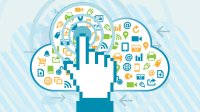Making Digital Communications Accessible
Tips for making the information schools share with students’ families more accessible for people of all abilities.
Your content has been saved!
Go to My Saved Content.As educators take advantage of digital tools to communicate with families and communities, do we think enough about who can access the information we share? According to the Digital Accessibility Toolkit: What Education Leaders Need to Know: “Accessibility is essential for leveraging technology and providing educational opportunities for all students, including those with disabilities and English learners (ELs). School systems need to ensure all information provided to the public, parents, and guardians is accessible.”
In sum, schools have an obligation to provide equal access to content, programs, resources, and learning platforms. Accessibility is a matter of civil rights and can also be a legal issue—several districts across the country are currently under investigation for issues related to website accessibility.
And when it comes to the information educators send to families about their child, accessibility can be a critical aspect of student success. It’s is simply good practice—it means a message can be heard by all.
Easy Ways to Improve Accessibility
Part of improving accessibility means making information easier for anyone (with or without a disability) to understand. This encompasses ideas like using plain language and limiting use of acronyms. In addition, there are ways to make digital communications more accessible. I recently attended a presentation titled “Accessibility 101,” given by two experts in the field of digital communications and educational leadership, Hope Adler and Jessica McQueener. Inspired by their talk, here are several suggestions to consider for improving communications so more families and school and community members have access.
Use camel case in hashtags. Capitalize the first letter of every word in a hashtag, which allows it to be read out loud by screen readers (technology that enables some people with visual impairments to use a computer). Whether on Twitter, Facebook, Instagram, or any other platform, write hashtags #LikeThis instead of #likethis.
Include image descriptions. There are many reasons to include image descriptions (or “alt text”) in documents and on social media. For example, screen readers can’t interpret images; people with some cognitive disabilities understand text better than images; and there are circumstances in which images are blocked but alt text is displayed (for example, for security in some email systems).
Most social media and office programs make it easy to add image descriptions. You can:
- Turn on image descriptions in Twitter (they don’t count toward the character limit in a tweet)
- Add captions to Facebook photos
- Use alt text in Microsoft Office including Word, PowerPoint, Excel, and Outlook (other programs likely offer a similar feature)
Many programs used for email distribution (such as MailChimp, Constant Contact, and Hubspot) also offer simple ways to insert image descriptions.
Create meaningful hyperlinks. Instead of full hyperlinks or text that says “click here” or “learn more,” hyperlink ordinary language. This is better for screen readers, which often read URLs one character at a time. And people who use screen readers often browse a list of an article’s links to understand its content, so the phrase “click here” isn’t helpful.
Distribute information in multiple ways. When content requires certain auditory or visual capabilities, it’s not available to all. But it can be distributed in other ways. For example:
- Caption videos. Several social media sites, including Facebook and YouTube, make it easy to caption the videos you upload. In both, captions can be automatically generated, or you can upload a file. Just be sure to review auto-generated captions—they’re not always completely accurate.
- Post transcripts. Audio content such as podcasts and videos can be accompanied by transcripts, which allow those with disabilities to access the content and ensure it is searchable on a website. While transcribing can cost time and money, there are ways to do it fairly easily, such as by using transcription software. Or convert an audio file to video, upload it to YouTube, and use automatically generated captions as a start to a transcript.
A First Step
Whether you’re a classroom teacher, principal, school counselor, superintendent, or other, these ideas are a first step for what every educator can do to make their communications accessible to a broad audience. To systematize accessibility in a school or district takes a coordinated effort that includes examining purchasing policies, staff capacity on the issue, how accessibility legislation applies to new and emerging technologies, and much, much more.
But again, accessibility is not only a legal requirement, it is a best practice. Making sure all families and community members have access to the information you share ultimately benefits students.
